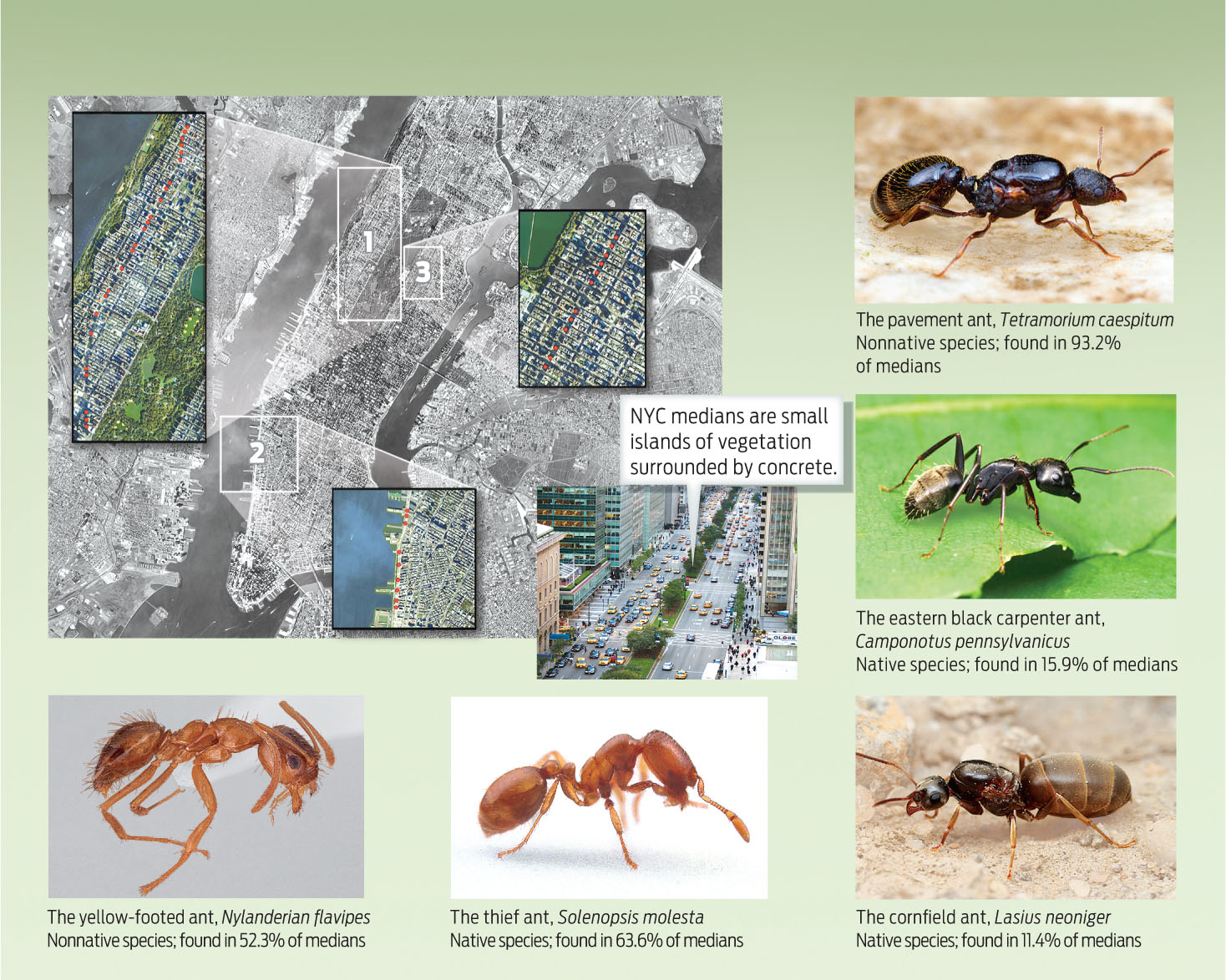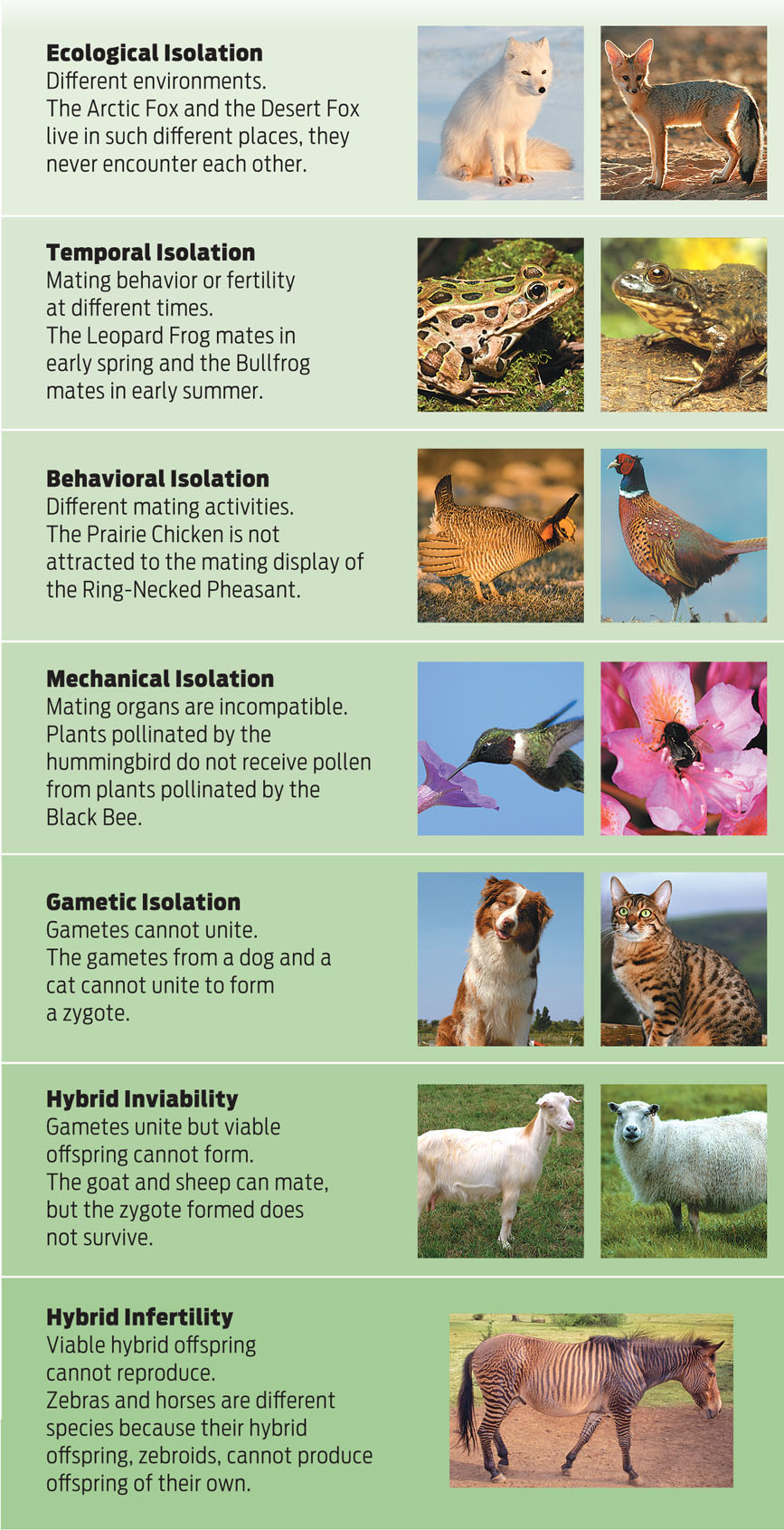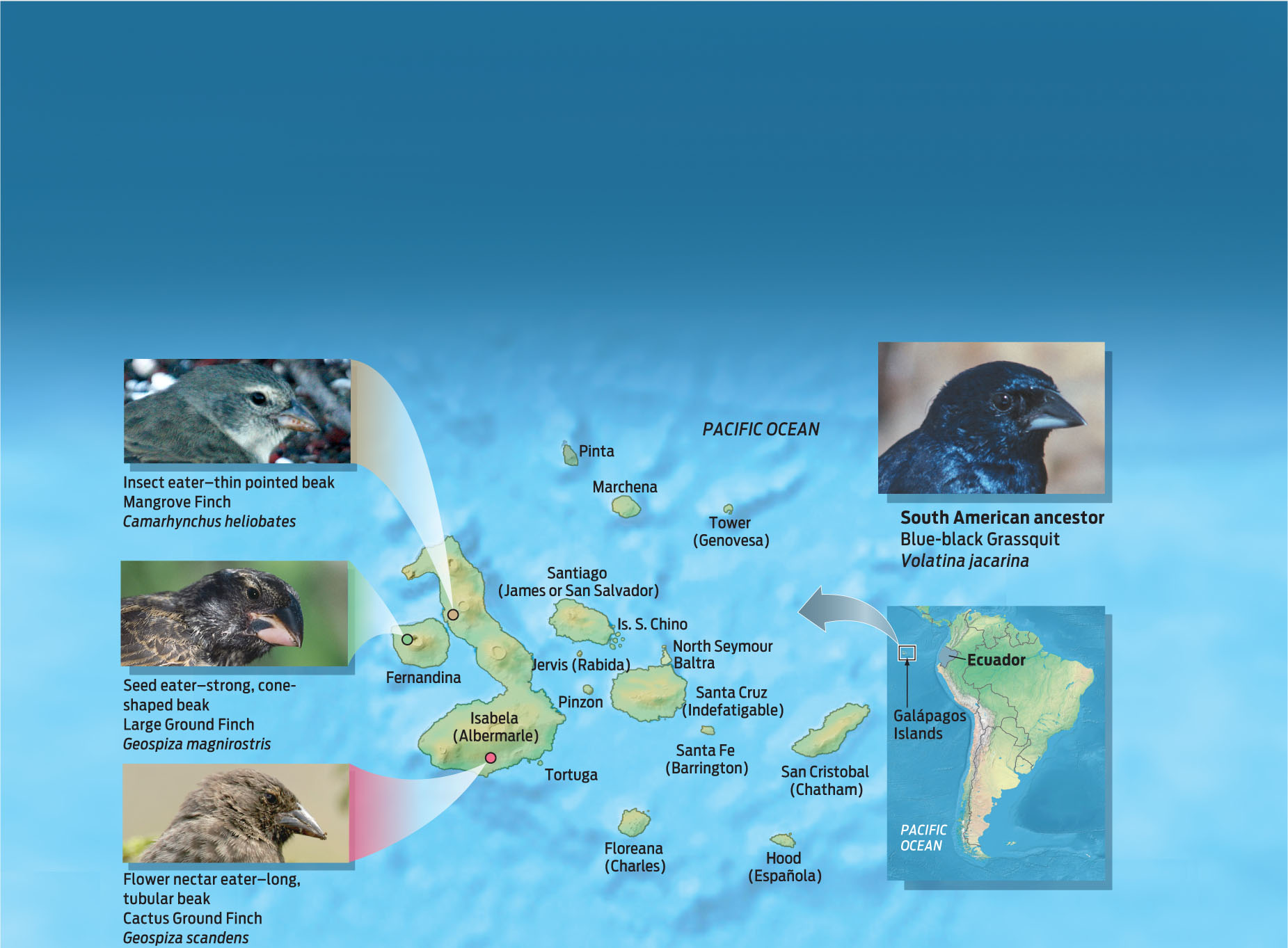BIODIVERSITY ON BROADWAY
A few years ago, in 2006, just up the road from where Munshi-South works, researchers at Columbia University decided to look at what is perhaps the most urban of all green spaces: median strips. Their idea was to look at these median strips as “islands” of wilderness within the city and to explore the diversity of ant species there. Were any species new to Manhattan, for example, or previously unidentified?
The researchers collected a total of 6,619 individual ants from 44 sites along three different avenues in the New York—Broadway, Park Avenue, and the West Side Highway. Amidst these crawling masses, they identified 13 different species of ant, including both native and introduced species. The most common ant species, found on nearly all medians, was an introduced species known as the pavement ant (Tetramorium caespitum), which hails originally from Europe, but ants from as far away as Japan were found. Somehow, despite the close quarters, all these different species are able to coexist alongside one another while maintaining their distinct lifestyles. As the researchers noted in their study, “Manhattan is, if not quite a melting pot of ant species, at least a mixing bowl.”
Some Ant Species in NYC

345
Basically, we’re mapping what’s actually out there. But instead of going off to the rain forest we’re looking in people’s backyards.
— ANDREA LUCKY
Rob Dunn, an entomologist at North Carolina State University, was one of the investigators in this ant study. From studying many urban ant populations, he has found evidence that that the ant species that seem to do best in urban settings are ones that hail from warmer climates, like the Southwest. Because of all the heat-absorbing concrete, cities on average tend to be warmer than rural and suburban areas. If cities are any indication, global climate change is going to alter the ranges and diversity of ant species in an area, with unpredictable consequences.
It was while studying ants in New York City that Dunn first had the idea for a larger project: a nationwide study of ants, using ordinary citizens as research assistants to collect specimens. Now in its second year, the project is called, appropriately, School of Ants.
Anyone can enroll. All you need are index cards, ziplock bags, and a pecan sandy—the bait of choice for seasoned ant collectors. Once the ants are collected, they’re put in the freezer for a night and then shipped off to a lab at the North Carolina State University, where they will be studied and catalogued.
The aim of School of Ants is to create a map of ant species across the country, especially in urban areas, where ants have been little studied. “Basically, we’re mapping what’s actually out there,” says Andrea Lucky, an entomologist at the University of Florida who, along with Dunn, now runs the project. “But instead of going off to the rain forest we’re looking in people’s backyards.”
The most exciting part of the project, says Lucky, is discovering new ant species—as one School of Ant researcher did recently in Durham, North Carolina. The new species, which has extremely tiny eyes, behaves as a social parasite, taking over the worker ants of other colonies and making them into “slaves.” The unusual species is currently in the process of being studied and named.
BIOLOGICAL SPECIES CONCEPT The definition of a species as a population whose members can interbreed to produce fertile offspring.
How did they know the ant species was new? Basically, says Lucky, you have to know a lot about what is already known. You look in books, in museum collections, and in research papers to see if your ant has been previously described. Then you compare your specimen to the existing ones. “You end up looking at a lot of ants,” Lucky says.
REPRODUCTIVE ISOLATION Mechanisms that prevent mating (and therefore gene flow) between members of different species.
Mostly, you’re considering physical appearance—shape of the head, number of spines and segments of antennae, even how furry the creature is—but DNA evidence is important for recognizing more subtle differences. The idea is that these physical and genetic differences reflect adaptations to different environments that in turn prevent the species from interbreeding. In essence, that is what defines a species.
The term species comes from the Latin word for “kind” or “appearance.” According to the biological species concept—which states the more formal definition that biologists use—a species is a population of individuals whose members can interbreed and produce fertile offspring.
Members of different species cannot mate and produce fertile offspring with each other because their populations are reproductively isolated. Such reproductive isolation can be caused by a number of factors. For example, the two species may have different mating times, locations, or mating rituals—so, like ships passing in the night, they may never have the opportunity to meet. This is true of many ant species, for example, which breed at different times of year. Or, two species may be able to mate—as zebras and horses can—but the hybrid offspring they produce is infertile (INFOGRAPHIC 15.6).
Species maintain their reproductive isolation in a variety of ways.

SPECIATION The genetic divergence of populations, leading over time to reproductive isolation and the formation of new species.
346
Reproductive isolation explains why species remain separate—as do all the species of ants that share a median strip—but how did the species form in the first place? New species form when a strong barrier to gene flow occurs between populations. That barrier could be physical—like a road or river that divides a forest in two—or climatic, like the different temperatures that occur at different elevations on a mountainside. Once this barrier forms, the separated gene pools will evolve independently by the mechanisms we have already encountered: mutation, genetic drift, and selection. Eventually, if enough genetic changes accumulate between populations of the same species to make them reproductively isolated, the two populations may diverge into separate species, a process called speciation.
Speciation is happening all the time in nature, but it can be hard to see because it occurs so slowly. It generally takes many thousands of years for species to diverge. We see the results of speciation whenever we look at the diversity of nature—there are more than 12,000 known ant species, for example—but observing speciation as it happens is much harder. The classic, and still the best, example of speciation comes from Darwin himself: the finches he observed on the Galápagos Islands, near Ecuador, while traveling aboard the Beagle (see Milestones in Biology: Adventures in Evolution). The original finch species came from the mainland of Ecuador. Descendants of this mainland population then island-hopped through the archipelago, creating founder populations on each island that then adapted locally, by natural selection, to the unique environments they encountered. From one ancestral species of finch have emerged 13 different species of finch, each with a distinctive beak size and shape adapted to a unique environment (INFOGRAPHIC 15.7).
The Galápagos archipelago is a series of islands off the coast of South America. Finches first came to the Galápagos from a population on the mainland of South America. As they spread from island to island, they encountered different environments, including available food sources, which influenced bill size and shape in each new island population. As separated finch populations evolved in different food environments, they diverged from their ancestral population to have smaller, pointed bills for insects, longer bills for cactus fruit and flowers, or thick, strong bills for hard seeds. In addition, they evolved such that the separated populations could not interbreed. At least 13 finch species have diverged from the original South American species.

347
Ants on median strips resemble Darwin’s finches in some respects: they are geographically separated and do not typically interbreed. Given enough time, ants from different median strips might very well form different species, much like finches on different islands. The same goes for New York City’s mice populations: they, too, might one day form new species, provided the populations remain isolated and continue to diverge genetically. But the timescale involved makes it hard to predict. It took thousands of years for Darwin’s finches to evolve into different species; the median strips and parks themselves may be long gone before that happens for ants and mice.